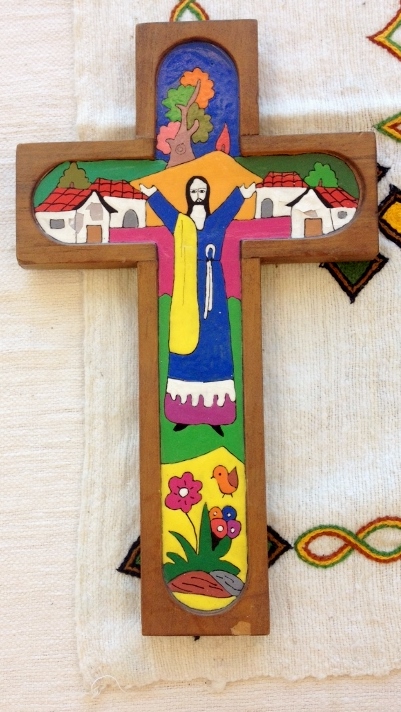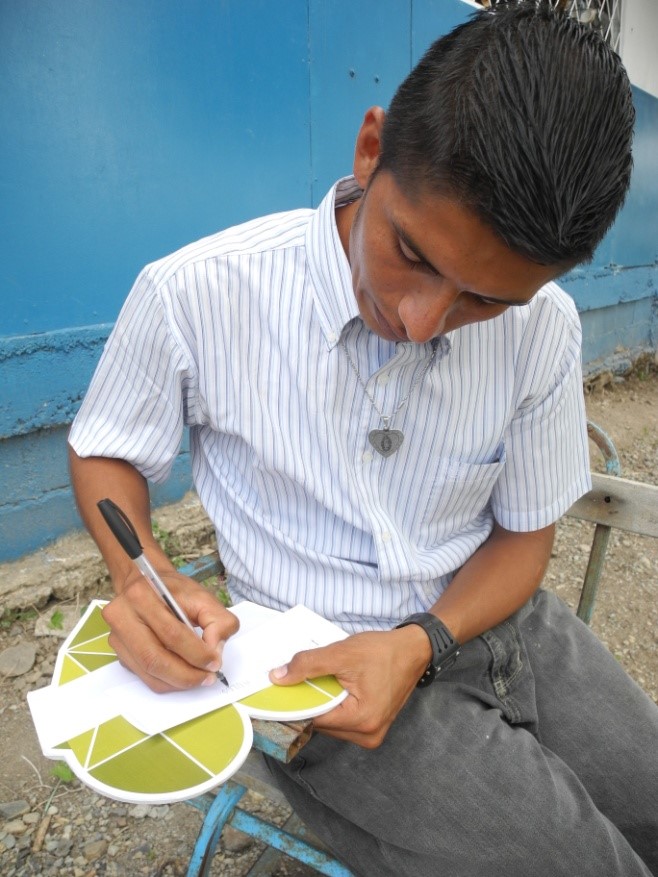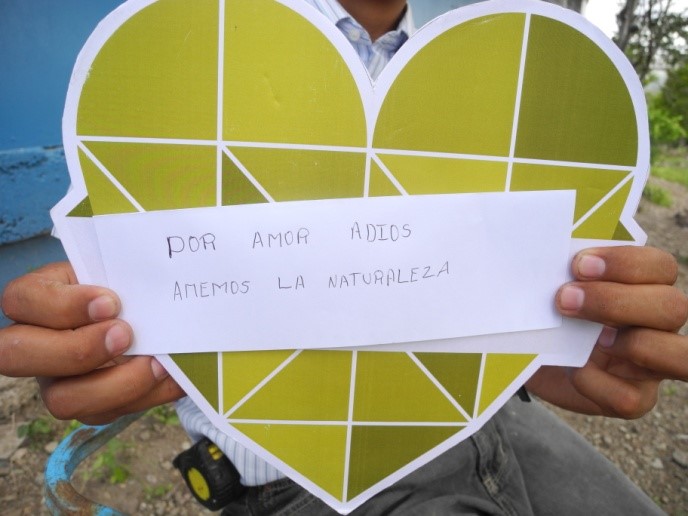Easter: Christ the redeemer of all creation
Father Augusto Zampini Davies is a RC priest, Moral Theologian and theological advisor to CAFOD. In the second of a series of blogs, Father Augusto explains how caring for creation is at the heart of the Easter message.

The environmental question brings together two central elements of Church teaching: promoting human development and caring for creation. This may sound overwhelming; some may feel it is too broad, or that it is exclusively related to scientists and experts. And including these concerns into our already busy and moving activities of the Easter season can be exasperating. Yet as Christians we have important reasons to consider the environmental question.
Reflect on creation this Easter
Caring for creation in Nicaragua
First, many of our brothers and sisters across the world experience the disastrous effects of climate change on a daily basis. For example in Nicaragua, crops are failing due to the extreme drought.
Lázaro Gutierrez is a teacher in the community of Santa Ana in the dry corridor of Nicaragua. Lázaro has seen the struggles which the families of his students have faced over the last few years due to the changing climate. With the support of our partner Caritas Jinotega, he has been working with the children to learn how to care for the environment and live sustainably.
Lázaro has a dream for the school. With our partner Caritas Jinotega he has been working to create a school garden, with fruit trees and vegetable plots, so the children can learn about nutrition and growing food and share what they learn with their families. He looks forward to the day when the trees they are planting now grow tall and throw shade where the children can sit and play at break times.
The meaning of redemption
At Easter, we celebrate that Christ has risen from the dead and set us free from our sins, instilling hope amongst the futility of death. The Spirit of the Resurrection, delivered to us as a gift, empowers us to be agents of God’s rejuvenating light. Disseminating this light so as to colour the blackness of death, whether physical, moral, social, or environmental, is a crucial task of Christ’s disciples. The lighting of candles at the Easter Vigil Mass symbolises how each of us are called to shine Christ’s light into the world.
If people like Lázaro’s students in Nicaragua are suffering from the dimness of environmental problems, they deserve our

assistance. However, they need more than immediate aid to survive; they need a change in the environmental conditions that are hurting them deeply. Inspired by the creative Spirit of Easter, we are invited to an environmental conversion, as we have compassion for our neighbours and the earth. We hope this will generate novel conditions where people can live well, and enable future generations to flourish.
A second motivation for reflecting on the environmental question at Easter is related to the meaning of redemption. The term ‘redeemer’, in the Old Testament, means literally the one who rescues, who buys back. It was generally applied to those Israelites who paid a sum of money to purchase something that was lost, occasionally their own relatives, who were about to become slaves due to some debt they owed. The main characteristics of the redeemer were that they would be willing and able to pay. By recovering his ‘enslaved’ relatives, the redeemer then freed them, enabling them to restart their lives (cf. Leviticus 25:23-28).
Christ redeems all of creation
Christ redeems God’s precious entire creation. This includes not merely human beings, but ‘all things’, as St Paul explains, or ‘all flesh’, as Blessed John Paul II, clarified. The reason Christ recovers the whole creation can be traced back in the book of Genesis (Chapters 1, 6, 9), part of which we read on Easter Vigil. Due to the sin and violence of humans, every living creature on earth is threatened by extinction.
As the story of Noah depicts it, humans, all living creatures and the earth were lost and needed to be recovered. But given that all of nature belongs to the creator, only God can rescue it. Therefore, what Christ brings is a ‘regeneration’, or a ‘re-genesis’, a new way of living: the Kingdom of God. Human violence and sins, in the new heavens and earth Easter brings, need to be reverted by a human peaceful and faithful person, someone able to seal the covenant with God forever: Christ.
In this new creation, those rescued in Christ still have a special role. As the waters helped to rescue the Arc of Noah (with his family and fellow creatures in it) and take it out of the flood into a new creation, so the waters of those baptised in Christ should help to rescue the Arc of the Earth, with all people and creatures in it, and take it to the new life or creation Easter brings.
New life for all includes people like Lázaro’s students in Nicaragua, who are among millions affected by the changing climate. Strengthened with the Spirit of Christ, we pray we might bring the light of change in solidarity with our neighbours and all creation.
Contemplate the beauty of creation with our climate reflections

Reblogged this on Miss Alexandrina and commented:
Easter and the world and climate change.